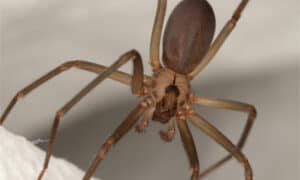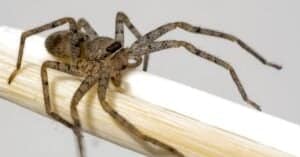While both are arachnids and spine chilling to behold, there are many differences between a male vs female black widow spider. You may not know just how many differences there are between them, and these two spiders may have less in common than you think!
In this article we will address all of the similarities and differences between male black widows and female black widows. You will learn about their differing behaviors, lifespans, and how they look. Knowing how to tell a male and a female black widow spider apart is necessary, especially when you consider their dangerous bite! Let’s get started and talk about these spiders now.
Comparing Male vs Female Black Widow Spider
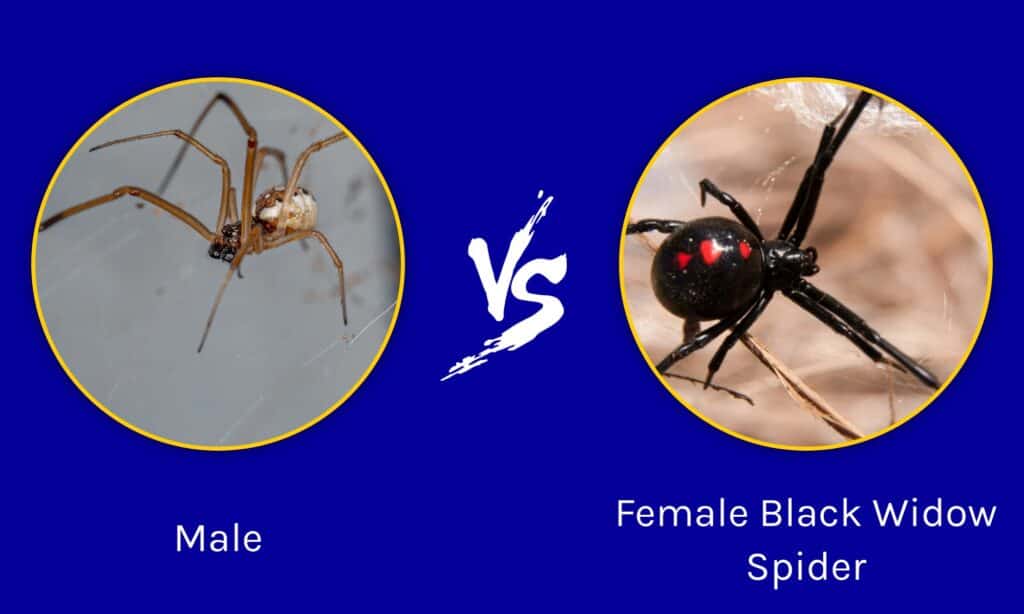
| Male Black Widow Spider | Female Black Widow Spider | |
|---|---|---|
| Size | ½ inch-1 inch | 1 ½ inches-2 inches |
| Appearance | Brown or gray with small red spots on abdomen and sometimes white stripes; long legs compared to body | Shiny black body with red hourglass underneath abdomen; short legs compared to size of body |
| Lifespan | 3-5 months | 10-18 months |
| Behavior | Does not bite and must escape female black widow to avoid being eaten; initiates breeding based on pheromones | Aggressive and protective of eggs; will bite humans as well as eat male black widows if hungry. Can lay 200-900 eggs in a single mating process |
| Hourglass? | No hourglass | Yes; hourglass underneath abdomen |
Key Differences Between Male vs Female Black Widow Spider
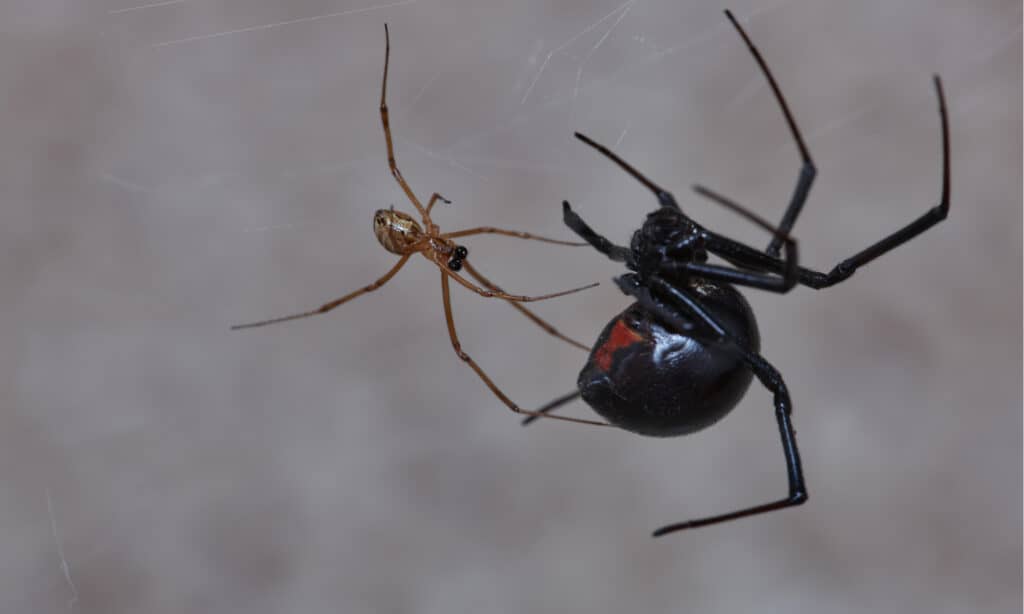
Male black widow spiders are brown or gray in appearance, while female black widow spiders are jet black and shiny.
©lighTTrace Studio/Shutterstock.com
There are many key differences between a male vs female black widow spider. The female black widow spider outgrows the male spider by almost double. Male black widow spiders are brown or gray in appearance, while female black widow spiders are jet black and shiny. The lifespan of the male black widow spider is much shorter than the female black widow spider. But this is only the beginning of their differences. Let’s talk about them in more detail now.
Male vs Female Black Widow Spider: Size
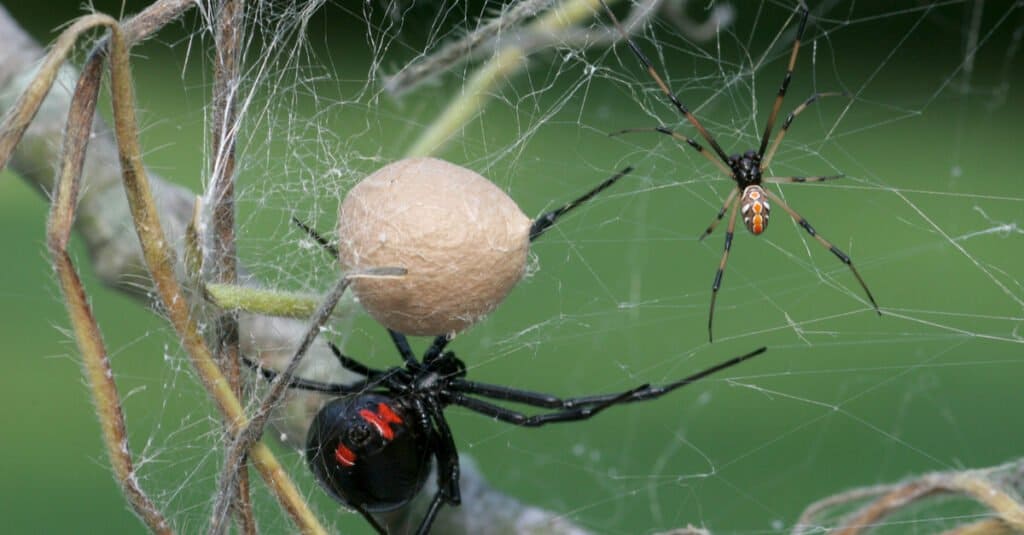
You can easily tell the difference between a male vs female black widow spider based on their markings alone.
©Mark_Kostich/Shutterstock.com
While it may surprise you, the female black widow spider is far larger than the male black widow spider. It is a common occurrence to see a female spider almost double the size of a male spider, and this is likely due to the fact that the female black widow lays eggs, while the male black widow obviously does not.
The average female black widow reaches anywhere from an inch and a half to 2 inches in length, while male black widows average half an inch to barely an inch long. This does not include their legs, but either way the female black widow is larger than the male.
Male vs Female Black Widow Spider: Hourglass and Other Markings
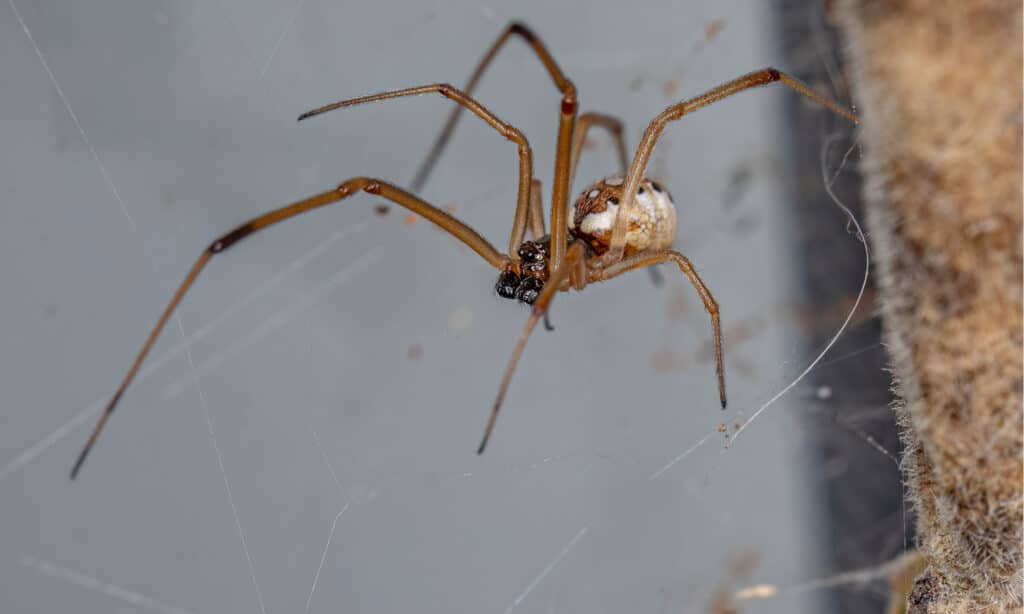
Male black widows may also have white stripes on their abdomen and legs, while black widow spiders remain completely black throughout their body.
©Vinicius R. Souza/Shutterstock.com
You can easily tell the difference between a male vs female black widow spider based on their markings alone. This can be helpful when it comes to identifying them in the wild or in your own home. Let’s talk more about their markings in more detail now.
Female black widow spiders are well-known for the red hourglass on the underside of their abdomen, while males do not have the presence of an hourglass at all. Instead, male black widow spiders often have red or orange spots on the top side of their abdomens, while female black widow spiders do not have this.
Additionally, male black widows may also have white stripes on their abdomen and legs, while black widow spiders remain completely black throughout their body. However, many male black widows do not earn this pattern, as it comes with age. You will shortly learn that the lifespan of a male black widow is not particularly long!
Male vs Female Black Widow Spider: Appearance
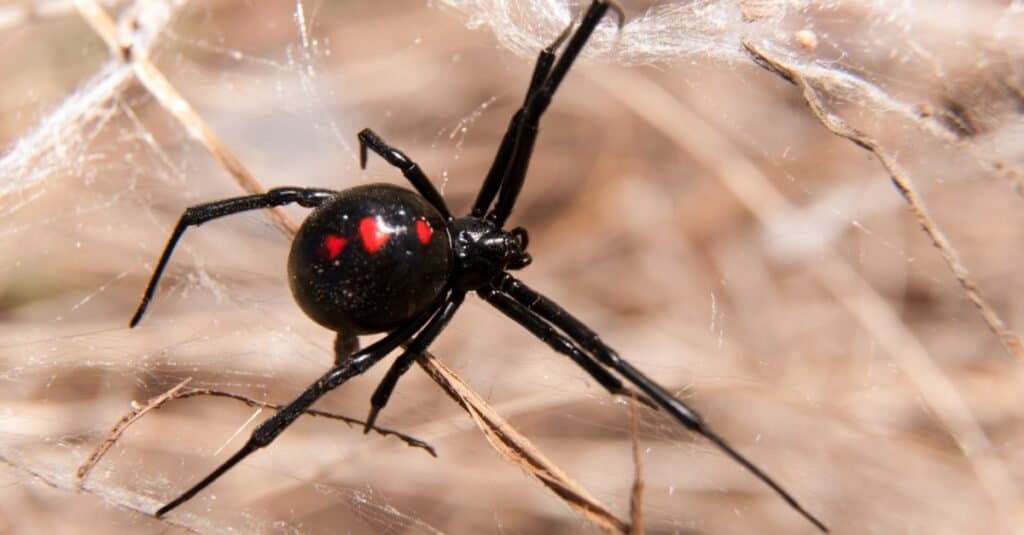
Not only do males have more markings than females, but male black widow spiders aren’t black at all compared to female black widow spiders!
©Sari ONeal/Shutterstock.com
Speaking of markings, let’s talk more about the appearance of a male vs female black widow spider. Not only do males have more markings than females, but male black widow spiders aren’t black at all compared to female black widow spiders! In fact, most male black widows are brown or gray in appearance, while all female black widow spiders are shiny black.
The leg length of these two spiders differ as well. For example, females have shorter legs compared to the size of their bodies, while males have longer legs compared to the size of their bodies. However, this may not be evident unless you are looking at a male and female black widow spider side by side.
Male vs Female Black Widow Spider: Behavior
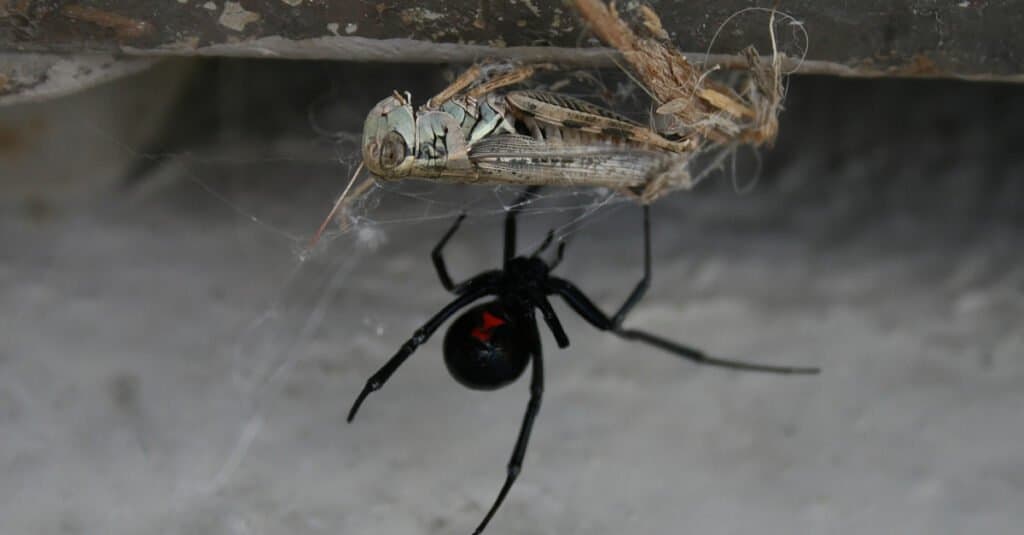
Female black widow spiders live for an average of 10 to 18 months, while male black widow spiders live for an average of three to 5 months.
©Crystal Kirk/Shutterstock.com
There are some primary differences in the behaviors of the male and female black widow spider. For example, males initiate breeding based on the pheromones released by female black widow spiders. Male black widow spiders can also sense when female black widow spiders are hungry, and this is when they take their exit from the female black widow spider to avoid being eaten!
Another key difference in their behavior is that male black widow spiders do not bite, while female black widow spiders do. In fact, a bite from a female black widow spider can be more fatal or dangerous than a bite from a rattlesnake.
Male vs Female Black Widow Spider: Lifespan
A final difference between male and female black widow spiders lies in their lifespan. Female black widow spiders live for an average of 10 to 18 months, while male black widow spiders live for an average of three to 5 months. Of course, the lifespan of the male black widow spider will be even shorter if he happens to get eaten by the female black widow spider during its mating. However, less than 2% of all male black widow spiders are actually eaten by female black widow spiders.
What is Often Mistaken for a Black Widow?
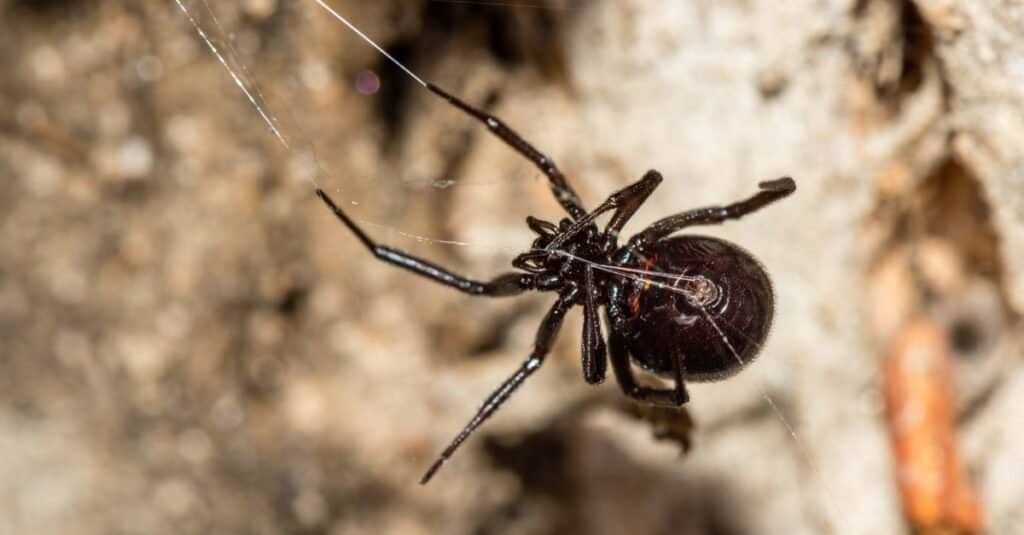
The false black widow is commonly mistaken for the black widow.
©Danie Spreeth Photography/Shutterstock.com
The false black widow spider, Steatoda grossa, while not a genuine widow spider, belongs to the same family, Theridiidae, and can be easily mistaken for one. It shares similar characteristics.
It possesses the characteristic rounded-abdomen body shape and web-building behaviors seen in true black widow spiders.
Nonetheless, it’s worth noting that this spider is slightly smaller in size compared to a fully-grown western black widow spider.
The photo featured at the top of this post is © lighTTrace Studio/Shutterstock.com
Thank you for reading! Have some feedback for us? Contact the AZ Animals editorial team.



